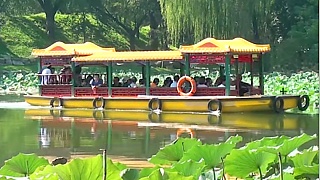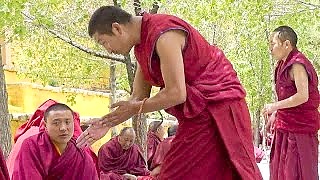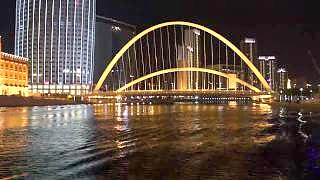With Ian Louis ...
[640],shadow=true,start=,stop=With Seiu Travel ...
Visitor Guide to TaiHe River, TianJin
Overview
The TaiHe River, located in TianJin, is a picturesque waterway that offers a blend of natural beauty and cultural heritage. Known for its serene landscapes and historical significance, the TaiHe River is a must-visit destination for those exploring TianJin.
Getting There
By Air: TianJin Binhai International Airport (TSN) is the nearest airport, located about 20 kilometers from the city center. From the airport, you can take a taxi, airport shuttle, or public bus to reach the TaiHe River area.
By Train: TianJin Railway Station and TianJin West Railway Station offer convenient access to the city from major destinations across China. From the stations, you can take local transport to reach the river.
By Bus: Long-distance buses from nearby cities and provinces also provide access to TianJin. The main bus stations in TianJin are TianJin Coach Terminal and TianJin West Coach Station.
Getting Around
- Public Transport: TianJin has an extensive public transport network, including buses and a metro system, making it easy to navigate the city and reach the TaiHe River.
- Taxis: Taxis are readily available and relatively inexpensive. Ride-hailing apps like DiDi are also widely used.
- Biking: Bike-sharing services provide a convenient way to explore the riverbanks and surrounding areas.
Main Attractions
Scenic Walkways
The TaiHe River features well-maintained walkways along its banks, offering beautiful views of the water and surrounding greenery. It's an ideal place for a leisurely stroll, jogging, or simply relaxing by the river.
Historical Bridges
The river is spanned by several historical bridges, each with its own unique architecture and history. These bridges provide excellent photo opportunities and a chance to appreciate the engineering marvels of the past.
Riverside Parks
Several parks are located along the TaiHe River, including TaiHe Park and Haihe Cultural Square. These parks offer lush green spaces, recreational facilities, and picturesque spots for picnics and relaxation.
Boat Rides
Boat rides on the TaiHe River provide a unique perspective of the city and its landmarks. You can choose from various types of boats, including traditional wooden boats and modern yachts, to explore the river.
Night View
The TaiHe River is especially beautiful at night, when the bridges and buildings along the river are illuminated. A night cruise offers a magical experience, with the city's lights reflecting on the water.
Local Cuisine
While visiting the TaiHe River, you can enjoy a variety of local and regional dishes. Here are some recommendations:
- Goubuli Baozi: TianJin's famous steamed buns, known for their delicate flavor and intricate folds.
- Erduoyan Zhagao: A traditional TianJin snack made of glutinous rice and red bean paste, fried to perfection.
- Jianbing: A popular Chinese street food, similar to a savory crepe, filled with egg, scallions, cilantro, and crispy wonton strips.
Shopping
- Ancient Culture Street: A vibrant pedestrian street offering traditional Chinese handicrafts, antiques, and souvenirs.
- BinJiang Dao Commercial Street: A modern shopping area with a wide range of international and local brands, perfect for a shopping spree.
- HePing Lu Shopping District: Known for its department stores and specialty shops, this district is a shopper's paradise.
Accommodation
- Luxury Hotels: TianJin has several high-end hotels offering excellent amenities and services, such as the Ritz-Carlton TianJin and the St. Regis TianJin.
- Mid-Range Hotels: There are numerous mid-range options providing comfortable accommodations at reasonable prices, including international chains like Marriott and local boutique hotels.
- Budget Accommodations: Budget travelers can find affordable guesthouses, hostels, and budget hotels throughout the city.
Historical Background of TaiHe River
The TaiHe River, also known as the "Peace River," has played a significant role in the history and development of TianJin. The river has been a vital waterway for trade, transportation, and cultural exchange for centuries.
During the Ming and Qing Dynasties, the TaiHe River was an essential part of the Grand Canal, facilitating the movement of goods and people between northern and southern China. The river's strategic location contributed to TianJin's growth as a major commercial and trading hub.
In modern times, the TaiHe River has become a focal point for urban development and tourism. Efforts to beautify and preserve the river have made it a popular destination for both locals and visitors, blending the city's rich history with its vibrant present.
Tips for Visitors
- Best Time to Visit: The best times to visit the TaiHe River are spring (April to June) and autumn (September to November) when the weather is mild and pleasant.
- Clothing: Wear comfortable walking shoes and dress in layers to accommodate changing temperatures. Bring a hat and sunscreen if you plan to spend time outdoors.
- Respect Local Customs: Be respectful of local customs and traditions, especially when visiting cultural and historical sites.
- Language: While Mandarin is widely spoken, learning a few basic phrases or using a translation app can be very helpful.
- Plan Your Visit: The TaiHe River offers a mix of natural beauty and cultural attractions. Plan your visit to include both leisurely activities and sightseeing to fully appreciate the area's offerings.
Conclusion
The TaiHe River in TianJin, with its scenic walkways, historical bridges, and vibrant parks, offers a unique blend of natural beauty and cultural heritage. Whether you're taking a leisurely stroll along the riverbanks, enjoying a boat ride, or exploring the city's rich history, the TaiHe River provides a serene and memorable escape. Plan your visit carefully to make the most of your time in this picturesque and historically significant area of TianJin.
Tianjin, located in northeastern China and just a short train ride from Beijing, is a bustling metropolis with a rich history, vibrant culture, and a unique blend of Chinese and Western influences. Here's a guide for tourists visiting Tianjin:
Historical and Cultural Attractions:
Tianjin Ancient Culture Street (Guwenhua Jie): This pedestrian street is lined with traditional Chinese-style buildings and shops selling arts, crafts, and souvenirs. Visitors can also enjoy street performances, local snacks, and cultural activities.
Tianjin Eye: This iconic Ferris wheel offers panoramic views of the city skyline and Hai River. It's especially stunning at night when the city lights are illuminated.
Italian Style Street (Wudadao): Located in the former British concession area, Wudadao features over 2,000 European-style buildings dating back to the late 19th and early 20th centuries. Visitors can admire the architecture, visit cafes and boutiques, and take guided tours to learn about the area's history.
Porcelain House (China House): This unique attraction is a mansion adorned with millions of porcelain fragments, creating intricate mosaics and sculptures. It's a fascinating example of modern Chinese art and architecture.
Modern Attractions:
Tianjin Binhai Library: Known for its futuristic design, this architectural marvel features a massive spherical auditorium surrounded by bookshelves that appear to float in mid-air. It's a must-visit for architecture enthusiasts and book lovers alike.
Tianjin Haihe Cultural Square: This waterfront promenade along the Hai River is a popular spot for leisurely strolls, boat rides, and cultural events. Visitors can enjoy views of the city's landmarks, including the Tianjin Eye and the Tianjin TV Tower.
Culinary Delights:
Tianjin Cuisine: Sample local specialties such as Goubuli Baozi (steamed buns filled with meat and vegetables), Jianbing (Chinese-style crepes), and Erduoyan Fried Dough Twists (a crispy snack made from twisted dough).
Guifaxiang Mahua: These twisted, fried dough snacks are a beloved Tianjin delicacy. Visitors can watch as vendors prepare them fresh on the spot and enjoy them hot and crispy.
Practical Tips:
Transportation: Tianjin has a well-developed public transportation system, including buses, subways, and taxis. The city is also easily accessible by high-speed train from Beijing and other major cities.
Language: Mandarin Chinese is the official language, but English may not be widely spoken outside of tourist areas. It's helpful to learn a few basic phrases or carry a translation app.
Weather: Tianjin has a temperate climate, with hot, humid summers and cold winters. The best times to visit are in the spring and autumn when the weather is mild and comfortable.
Tianjin offers a fascinating mix of historical charm, modern attractions, and culinary delights, making it a rewarding destination for tourists. Whether you're exploring ancient streets, admiring futuristic architecture, or savoring local flavors, Tianjin has something to offer visitors of all interests.

 The beautiful TaiHe River in TianJin
The beautiful TaiHe River in TianJin






















